3-3 Galileo’s discoveries of moons orbiting Jupiter and the phases of Venus strongly supported a heliocentric model
If you were a practicing scientist 400 years ago, what would you accept as “proof” that Earth orbited the Sun and not the other way around? When Dutch opticians invented the telescope during the first decade of the seventeenth century, astronomy was changed forever. The scholar who used this new tool to amass convincing evidence that the planets orbit the Sun, not Earth, was the Italian mathematician and physical scientist Galileo Galilei.
While Galileo did not invent the telescope, he was the first to point one of these new devices toward the sky and to publish his observations. Beginning in 1609, he saw sights of which no one had ever dreamed. He was the first to view mountains on the Moon, sunspots on the Sun, rings around Saturn, phases of Venus, moons orbiting Jupiter, and that the Milky Way is not a featureless band of light passing overhead but rather “a mass of innumerable stars.”
73
The Phases of Venus
One of Galileo’s most important discoveries with the telescope was that Venus exhibits phases like those of the Moon (Figure 3-9). Galileo also noticed that the apparent size of Venus as seen through his telescope was related to the planet’s phase. Venus appears small at gibbous phase and largest at crescent phase. Figure 3-10 shows that these relationships are entirely compatible with a heliocentric model in which Earth and Venus both go around the Sun. They are also completely incompatible with the Ptolemaic system, in which the Sun and Venus both orbit Earth. To explain why Venus is never seen very far from the Sun, the Ptolemaic model had to assume that the orbits of Venus and of the Sun move together in lockstep, with Venus’s path centered on a straight line between Earth and the Sun (Figure 3-11). In this model, Venus was never on the opposite side of the Sun from Earth, and so it could never have shown the gibbous phases that Galileo observed.
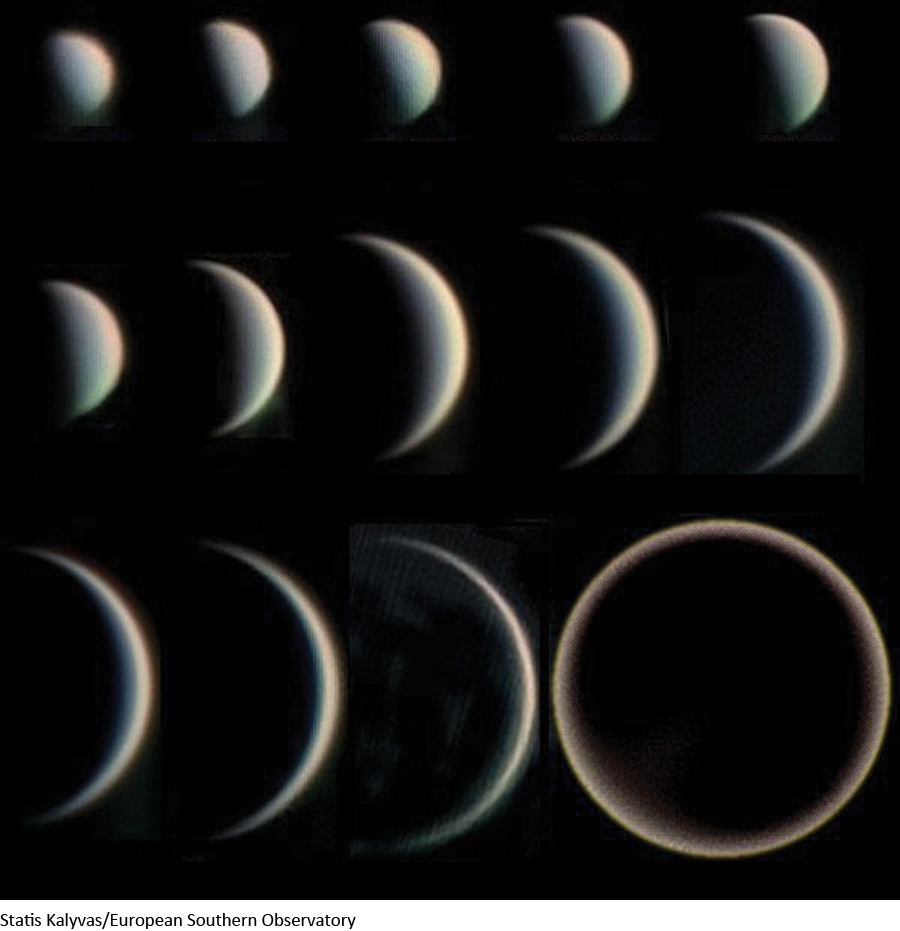
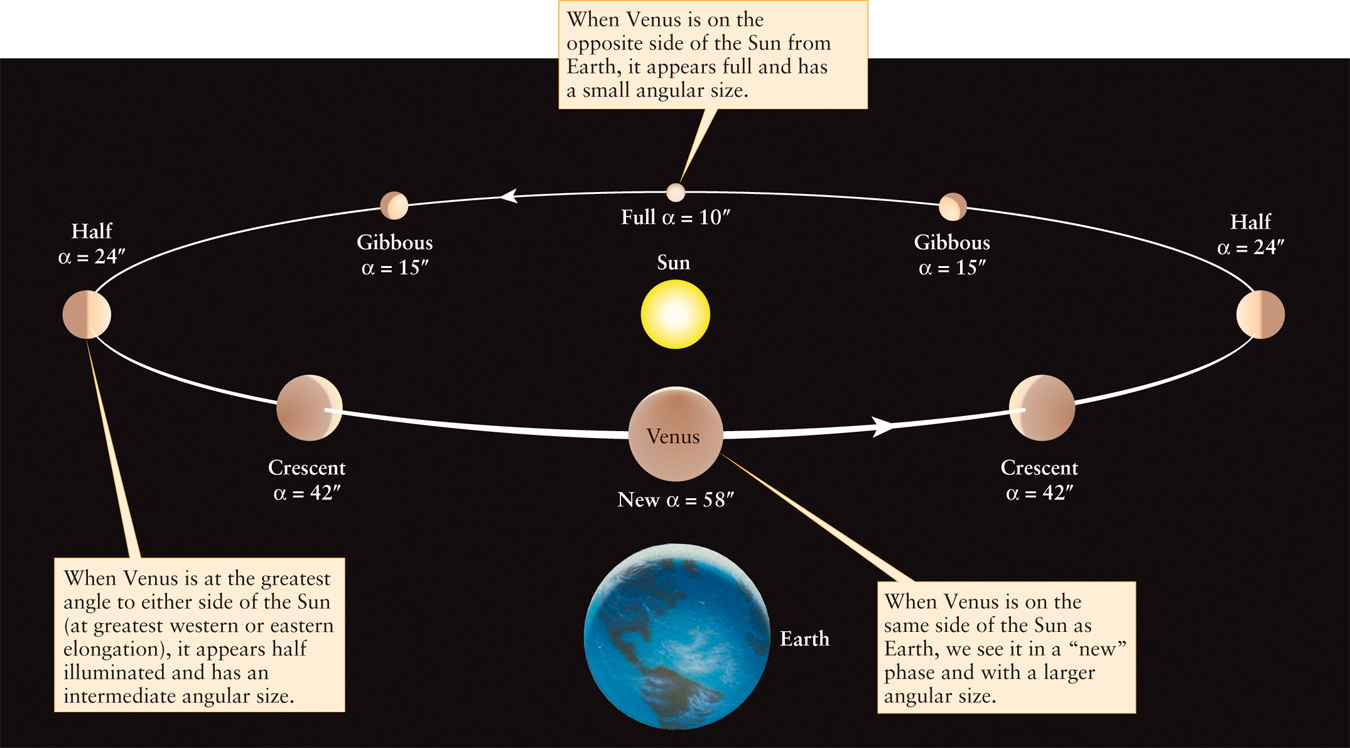
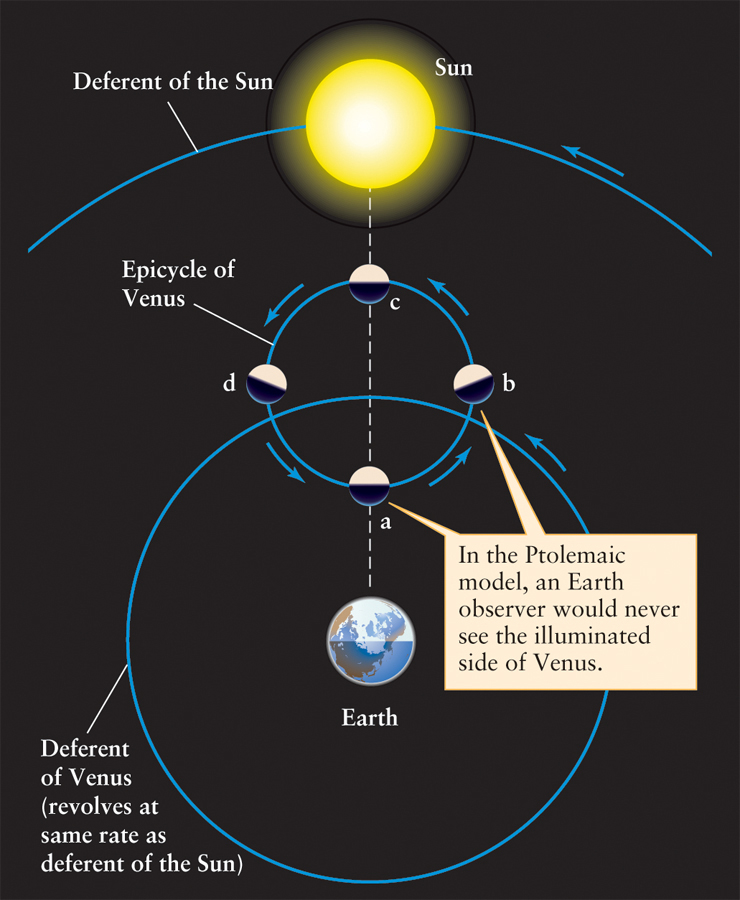
Question
ConceptCheck 3-11: Which phase will Venus be in when it is at its maximum distance from Earth?
The Moons of Jupiter
Jupiter’s own orbiting moons and Venus’s phases provide indirect evidence for a Sun-centered model.
The guiding philosophy of most people in Galileo’s day was that Earth was the center of all orbits. Imagine how surprised observers were in 1610 when he discovered four previously unknown moons orbiting Jupiter (Figure 3-12). He realized that they were orbiting Jupiter because they appeared to move back and forth from one side of the planet to the other. Figure 3-13 shows confirming observations made by Jesuit observers in 1620. Astronomers soon realized that the larger the orbit of one of the moons around Jupiter, the slower that moon moves and the longer it takes that moon to travel around its orbit. These are the same relationships that Copernicus deduced for the motions of the planets around the Sun. Thus, the moons of Jupiter behave like a Copernican system in miniature, demonstrating that Earth is not the center of all orbits.
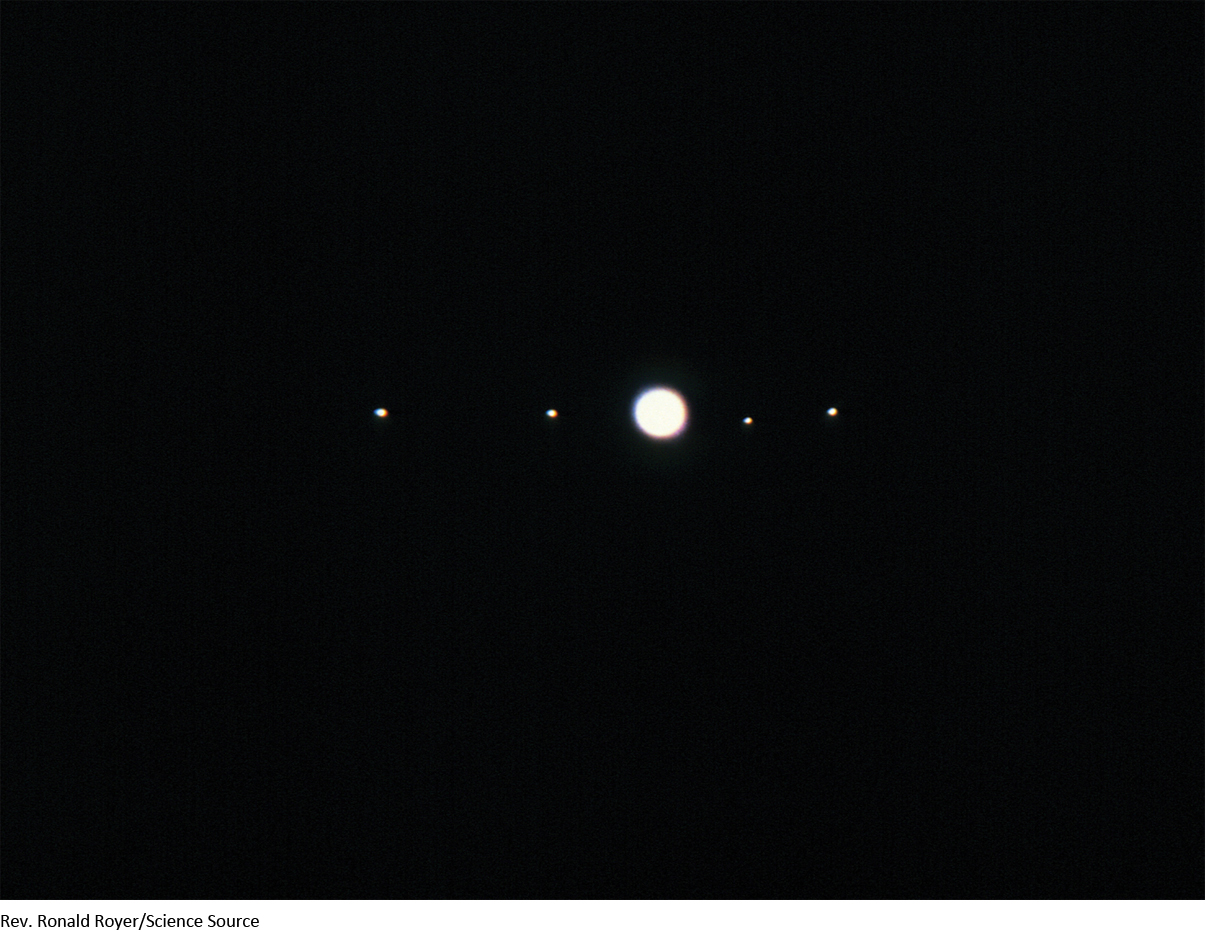
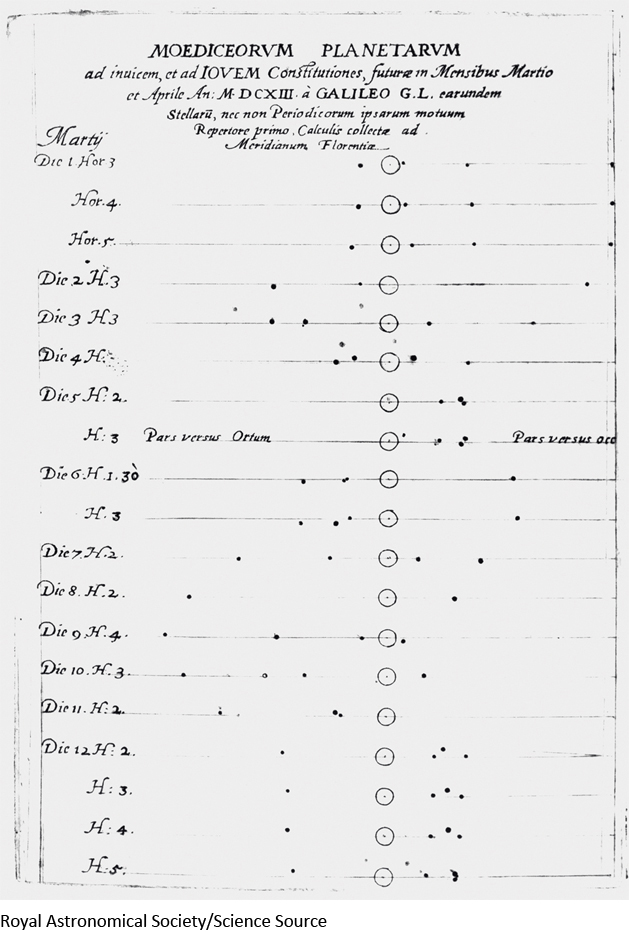
74
Contradicting prevailing opinion and religious belief, Galileo’s discoveries strongly suggested a heliocentric structure of the universe. The Roman Catholic Church of the day, which was a powerful political force in Italy and whose doctrine at the time placed Earth at the center of the universe, cautioned Galileo not to advocate a heliocentric model. He nonetheless persisted and was sentenced to spend the last years of his life under house arrest “for vehement suspicion of heresy.” Nevertheless, there was no turning back. (The Roman Catholic Church lifted its ban against Galileo’s heliocentric ideas in the 1700s and in 1992 apologized for its treatment of Galileo.)
While Galileo’s observations showed convincingly that the Ptolemaic model was entirely wrong and that a heliocentric model is the more nearly correct one, he was unable to provide a complete explanation of why Earth should orbit the Sun and not vice versa. The first person who was able to provide such an explanation was the Englishman Isaac Newton, born on Christmas Day of 1642, the same year that Galileo died. While Galileo revolutionized our understanding of planetary motions, Newton’s contribution was far greater: He deduced the basic laws that govern all motions on Earth as well as in the heavens. But before we can talk about Newton, we need to talk about a contemporary of Galileo, the mathematician Johannes Kepler.
Question
ConceptCheck 3-12: Why had Jupiter’s moons not been observed prior to Galileo’s time?